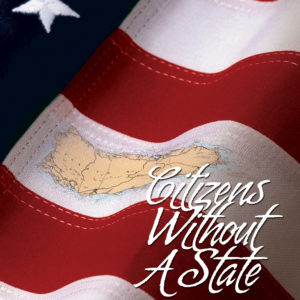The Louisiana Purchase of 1803 was the largest territorial annexation in U.S. history. Congress was more than a little overwhelmed by the challenge of governing a territory of such enormous geographic size — particularly given the difference in political development between the northern tier and southern region of the territory.
Accordingly, in 1804 Congress divided the vast new territory into two parts, the New Orleans District in the south and the Louisiana District in the north. The state of Louisiana was formed in the New Orleans District in 1812, but instead of forming a new territorial government in the Louisiana District it was governed as a political subdivision of the Indiana Territory.
The delegates in the Indiana territorial legislature from the Louisiana District immediately petitioned for reunification with Louisiana and statehood for the entire territory. The petition accused Congress of dividing the territory to prevent an undivided Louisiana from qualifying for statehood based on population. The Louisiana District’s petition to Congress also called for bilingual French and English official language policy for government agencies and schools.
Demonstrating the need to be careful about what we ask, particularly from government, the Congress responded by denying reunification of the original Louisiana territory, separating the Louisiana District from Indiana, and downgrading the new territorial government to the first phase of political development under the Northwest Ordinance. That meant rule by a Governor and a three judge “Legislative Council” appointed by Washington.
It was not until 1812, when the New Orleans District to the south became the State of Louisiana, that Congress out of necessity changed the name of the Louisiana District to Missouri, established an elected lower house in the territorial legislative process, allowed election of a Delegate to Congress, and promulgated a territorial bill of rights.
In 1816 Missouri was upgraded to full territory status with an elected territorial legislature, and the stage seemed set for the territory to take the next step toward statehood. Just one problem — and it arose as a full-blown national confrontation in 1817 when Missouri petitioned Congress for admission as a slave state.
That confrontation was played out in 1818, as the southern states in Congress sought to admit Missouri as a slave state, and the northern states sought admission of Maine and Missouri as free states. After two full years of the most strident and vociferous debate in Congress, in 1820 the “Missouri Compromise” was reached. This provided for admission of Maine as a free state in 1820, and admission of Missouri as a slave state once it adopted a state constitution.
But for Missouri, there once again was just one problem. The state constitution proposed by Missouri included a provision empowering the state government to exclude freed former slaves from the state. Being able to practice slavery was not enough, the pro-slavery leaders in the territory wanted to prevent the disruption of slavery as a social institution that might result if “negroes or mulattoes” from free states that emancipated slaves, as the provision stated, came “on any pretext whatsoever” to live in the new state of Missouri.
In the meantime, Missouri elected and sent a full Congressional delegation to Washington, only to have its representatives denied membership, primarily due to northern state opposition to the exclusion of freed slaves from the state under the proposed state constitution. Thus, the standoff over that provision prevented Missouri from being admitted in 1820 in tandem with Maine.
Indeed, it would not be until August of 1821 that the tortured and poisonous political battle over the proposed Constitution produced a bitterly fought accommodation that really can be thought of as a far less well-known “Second Missouri Compromise.” Early in 1821 the Missouri admission bill which was then moving through Congress parallel to the Maine admission bill was amended in a way that showed clearly how the conflict over slavery contorted the nation’s legal and political process, predicting the ultimate inability to reconcile the divided nation until after a bloody civil war.
Specifically, the amendment to the proposed Constitution did not expressly prevent Missouri from adopting state government measures excluding free African Americans. Instead it simply stated that by admitting Missouri to the Union the Congress did not give “assent” to state measures that would deny citizens in the state of the privileges and immunities conferred on citizens in all other states, including free states. The amendment also required that Missouri approve the amendment so it could not claim it did not apply under state law.
The debate that ensued was a prelude to the Dred Scott case, a famous legal case focusing on the very nature of constitutional federalism, state versus national sovereignty, and the meaning of federal supremacy. The final compromise “split the difference” by providing the state could not deny the privileges and immunities of any citizen guaranteed under the federal constitution.
For the pro-slavery leaders of Missouri that left open the question of whether freed slaves were citizens and whether the federal constitution guaranteed privileges and immunities to former slaves in the state. For anti-slavery abolitionists in Washington it preserved the argument that Congress had the power under the Supremacy Clause of the Constitution to abolish slavery, and it was just a matter of marshaling the political will in the nation to do so.
Those very same two interpretations of what can be called the “Second Missouri Compromise” were the issues argued in the Dred Scott case some 38 years later. In that case the court decided that the first Missouri Compromise was unconstitutional because Congress could not make federal law apply differently in some states than in others, by making some states free and some slave.
On that basis the court upheld the property rights of slave owners to recapture escaped slaves in every state and territory (after ruling that the Constitution applied in the territories under the Northwest Ordinance). The court also ruled that former slaves are not citizens protected by the federal constitution. That feature of the Dred Scott case would appear to mean that if presented with the question the court also would have upheld the provision of the Missouri state constitution that excluded freed slaves.
However, in August of 1821 what we have termed the “Second Missouri Compromise” left the issues of federal supremacy and citizenship for freed slaves shrouded in just enough ambiguity for the Missouri territorial legislature to approve the amendment mandated by Congress. After which President Monroe signed the proclamation admitting Missouri as a State of the Union. Tragically, it would take the Civil War and the 14th Amendment to nullify the Dred Scott case, not to mention the freed slave exclusion provision of the Missouri state constitution.
Finally, there is an aspect of the Missouri admission debate relevant to Puerto Rico’s progress toward admission to the union. As in the case of Missouri, Congress caught on that the Puerto Rico territorial constitution proposed to Congress by the territorial government in 1952 was ambiguous about federal supremacy.
Accordingly, Congress made its approval of the territorial constitution for Puerto Rico conditional on acceptance of amendments imposed by federal law limiting the powers of the territorial government to local matters. The amendments mandated by Congress also confirmed that local government powers were subject to the supremacy of federal law over local law in all matters both local and federal. To ensure that Puerto Rico could never claim otherwise and amend the local constitution unilaterally to alter federal powers, Congress required that the U.S. citizens of Puerto Rico approve the Congressionally mandated amendments before the territorial constitution would be effective under federal law.
This historical account of Puerto Rico’s process for approval of a territorial constitution in 1952 in some ways mirrors the Missouri process for approval of a state constitution in 1821. Most importantly, it definitively repudiates and incontrovertibly disproves the revisionist ideology of anti-statehood faction in Puerto Rico that favors the current status. Specifically, the amendment to the Puerto Rico territorial constitution required by Congress in 1952 sweeps into the dust bin of history the argument that adoption of the “Constitution of the Commonwealth of Puerto Rico” made Puerto Rico a “new kind of state” with “autonomic powers” outside the sphere of federal supremacy under the federal constitution.








No responses yet